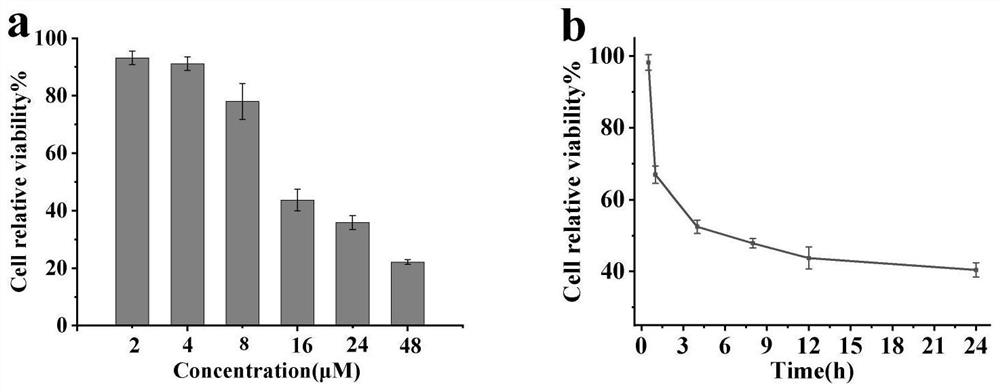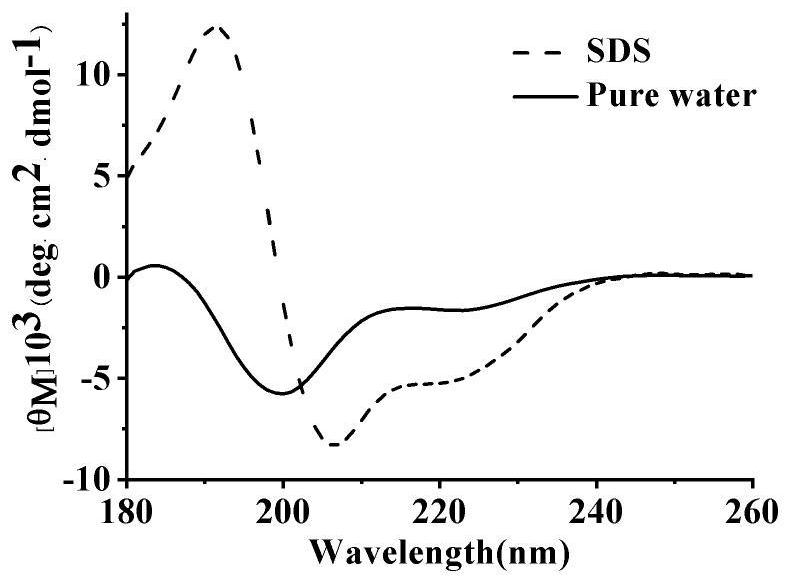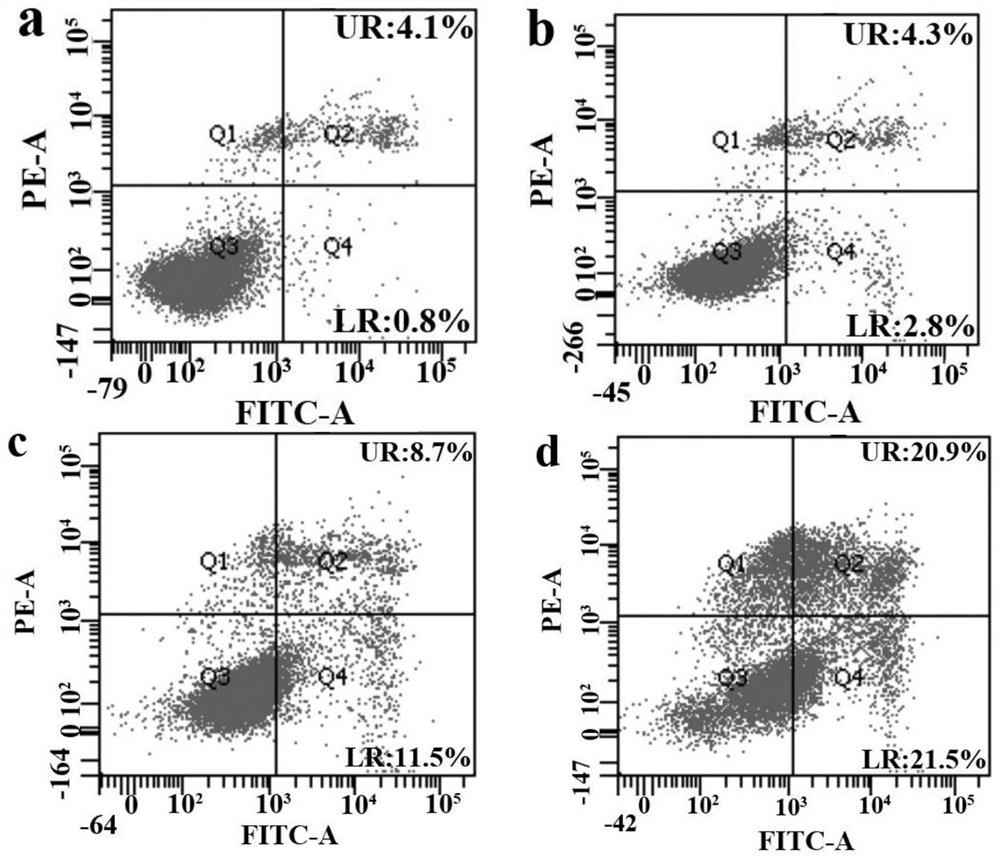Preparation of anti-cancer lipopeptide and application of anti-cancer lipopeptide in anti-tumor treatment
A lipopeptide and resin technology, which is used in the preparation of anticancer lipopeptides and the application field of antitumor therapy, can solve the problems of reducing hemolysis, low bioavailability, and reducing hydrophobic torque.
- Summary
- Abstract
- Description
- Claims
- Application Information
AI Technical Summary
Problems solved by technology
Method used
Image
Examples
Embodiment 1
[0022] Embodiment 1: the preparation method of anticancer lipopeptide
[0023] The synthesis of the anticancer lipopeptide of the present invention is carried out based on the Fmoc-protected solid-phase polypeptide synthesis method. The sequence of the anticancer lipopeptide is C 8 h 15 O-Asp-Ser-Asp-Val-Trp-Trp-Gly-Gly-Arg-Arg-Leu-Leu-Arg-Arg-Leu-Arg-Arg-Leu, the specific synthesis steps are as follows:
[0024] (1) Fmoc-Asp(OtBu)-Ser(tBu)-Asp(OtBu)-Val-Trp(Boc)-Trp(Boc)-Gly-Gly-Arg(Pbf)-Arg(Pbf)-Leu-Leu- Synthesis of Arg(Pbf)-Arg(Pbf)-Leu-Arg(Pbf)-Arg(Pbf)-Leu-WangResin.
[0025] Weigh a certain amount of Fmoc-Leu-Wang Resin with a loading capacity of 0.535mmol / g and place it in a beaker, add anhydrous DMF to swell the resin for 30min. Take a small amount of the above resin for ninhydrin detection, if it is colorless, continue. According to the ratio of DMF: piperidine = 4:1, add piperidine solution, stir magnetically for 30 minutes to remove Fmoc group, perform suction...
Embodiment 2
[0028] Example 2: In vitro anticancer activity assay of anticancer lipopeptides
[0029] The in vitro anticancer activity of anticancer lipopeptides was tested by MTT assay. Select HepG2 cells in the logarithmic growth phase, inoculate the HepG2 cells into a 96-well plate, and then place the 96-well plate in 5% CO 2 , in an incubator at 37°C, and after 24 hours, when the cells covered the bottom of the well, the old medium was sucked out, the lipopeptide was prepared into different concentrations with DMEM medium, and 100 μL of drug-containing medium was added to each well. Reflecting situation 4 is true and reliable, and 5 parallel experiments are set for each concentration to ensure the reliability of the experiment. After culturing for 24 h, add 20 μL (5 mg·mL -1 ) The MTT solution was placed in a cell culture incubator for 4 hours. Discard the supernatant, then add 150 μL DMSO to each well to dissolve the blue-purple MTT crystals, wrap the 96-well plate with tin foil an...
Embodiment 3
[0030] Example 3: Determination of the secondary structure of anticancer lipopeptides
[0031] The secondary structure of lipopeptide in water and SDS solution was detected by circular dichroism spectrometer. The lipopeptide was prepared into an aqueous solution with a final concentration of 150 μM and a sodium dodecyl sulfate (SDS) solution (30 mM) with a final concentration of 150 μM, wherein the aqueous solution simulated a hydrophilic environment, and the SDS solution was used to simulate a hydrophobic environment such as a cell membrane. Quartz cuvette (optical path length is 0.5mm), test with circular dichroism spectrometer, wavelength range is set as 180-260nm, the measured data is converted into average residue ellipticity with the spectrum obtained by the following formula:
[0032] θ M = θ obs ×1000 / cln
[0033] where θ M is the average residue ellipticity; θ obs is the ellipticity obtained by buffer correction at a given wavelength; c represents the sample conc...
PUM
 Login to View More
Login to View More Abstract
Description
Claims
Application Information
 Login to View More
Login to View More - R&D
- Intellectual Property
- Life Sciences
- Materials
- Tech Scout
- Unparalleled Data Quality
- Higher Quality Content
- 60% Fewer Hallucinations
Browse by: Latest US Patents, China's latest patents, Technical Efficacy Thesaurus, Application Domain, Technology Topic, Popular Technical Reports.
© 2025 PatSnap. All rights reserved.Legal|Privacy policy|Modern Slavery Act Transparency Statement|Sitemap|About US| Contact US: help@patsnap.com



